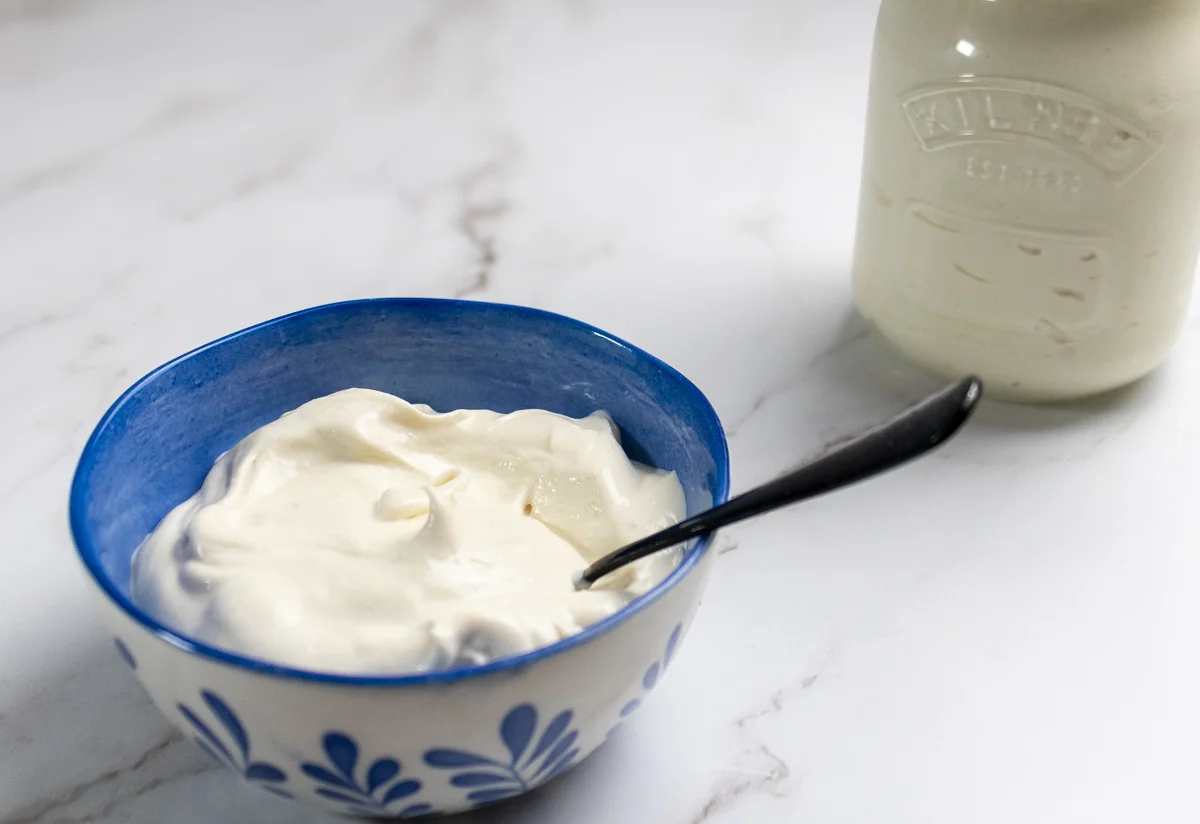This is one recipe that I thought would be really hard. In fact, it’s one of the easiest I’ve ever made, and it actually turned out to be one of the best. I would say that this is far better than the vegan mayo you buy in the shops. It genuinely tastes just like mayo!
Most of the other recipes for vegan mayo that I have tried, only last a few days before growing a fluffy black mould on them. While we go through mayo fairly fast in our house, I was still throwing a fair bit away. I fix this by adding some lactic acid to my recipe. You can easily find vegan lactic acid on Amazon or in most health food shops. It also makes it taste better!
The other challenge of creating a vegan mayo with the same rich and creamy texture as traditional mayo lies in the emulsifying agents. Where traditional mayonnaise uses egg, we will use several tricks to get the same result.
What is an emulsion?
An emulsion is a mixture of two liquids that do not mix, such as oil and water, held together by an emulsifying agent. The emulsifying agent’s molecules prevent the separation of oil and water by bonding with both. In this recipe, aquafaba, the liquid from cooked chickpeas, acts as the emulsifying agent. When aquafaba is whipped or blended, it forms a foam that traps air bubbles and disperses oil droplets throughout the water-based liquid, creating a stable emulsion.
The rest of of the ingredients in this recipe are all helping to bind the water and oil to give us mayonnaise. Mustard contains mucilage, a sticky substance that covers oil droplets and improves emulsions stability. The vinegar has acetic acid, which lowers the pH and increases the attraction between oil and water molecules. Xanthan gum, a soluble fibre, forms a gel-like network that stops oil droplets from combining. The combination of these ingredients creates a smooth and stable emulsion.
Ingredient notes
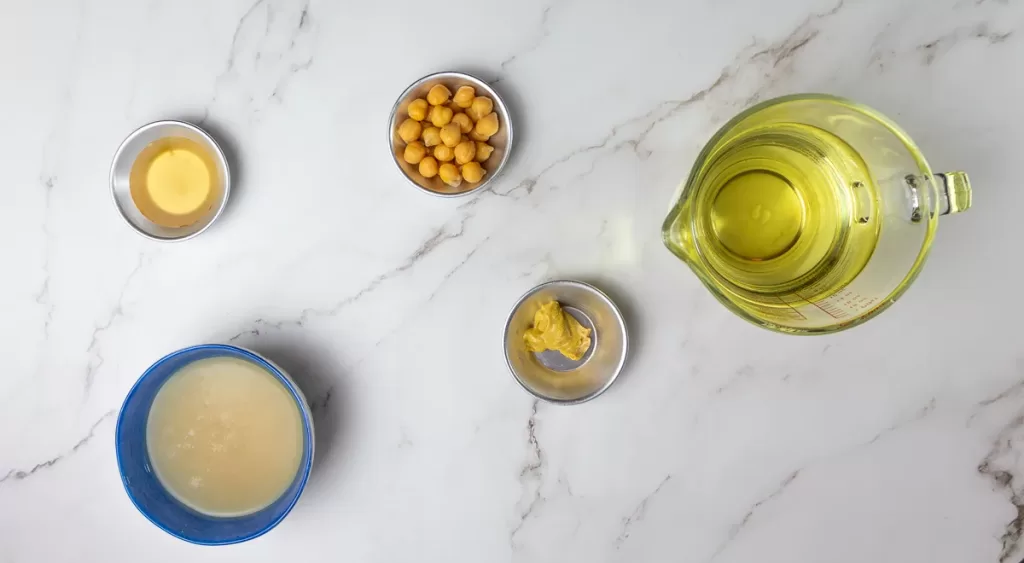
Aquafaba – This is going to be our main emulsifier in the recipe. Some recipes call for soy milk. This works, but I personally like the results with aquafaba better.
Chickpeas – While dried chickpeas are often better, in this case, there is no need. We need a couple of tablespoons of them to help form the mayo. When the starches from them break down, they help to emulsify our mayonnaise.
Mustard – This adds flavour, but also aids with the emulsification by acting as a stabiliser. You can use any type of mustard you like. Personally, I like to use Dijon here.
Lactic Acid – The lactic acid is going to add some pleasant tang to the mayo. It will also act as our main preservative, significantly increasing the shelf life. If you don’t have any, you can leave it out. I would just add a little more vinegar to your taste.
Vinegar – This is also going to add a nice tang to the mayo but also help to increase the shelf life
Xanthan gum – This is totally optional, but if included, you will get a firmer texture at the end. As well as a more stable emulsion that is less likely to break. Xanthan gum is available on Amazon and is perfectly safe to eat [1]. If you leave the xanthan gum out, you may need to add a little more oil until your mayo comes together.
Oil – This is the primary ingredient in the mayonnaise. I prefer using sunflower oil because it has a neutral flavour profile and is relatively healthy. If you want to make it healthier, you can use avocado oil. It will turn out green and have a different flavour, but it will work. You can also add a little olive oil mixed with the sunflower to create a deeper flavour. Use whichever oil you have available and prefer.
How to make vegan mayo
1) Start by adding all your ingredients to your blender, apart from the oil and the salt. I found that adding the salt to early makes it harder to create a stable emulsion.
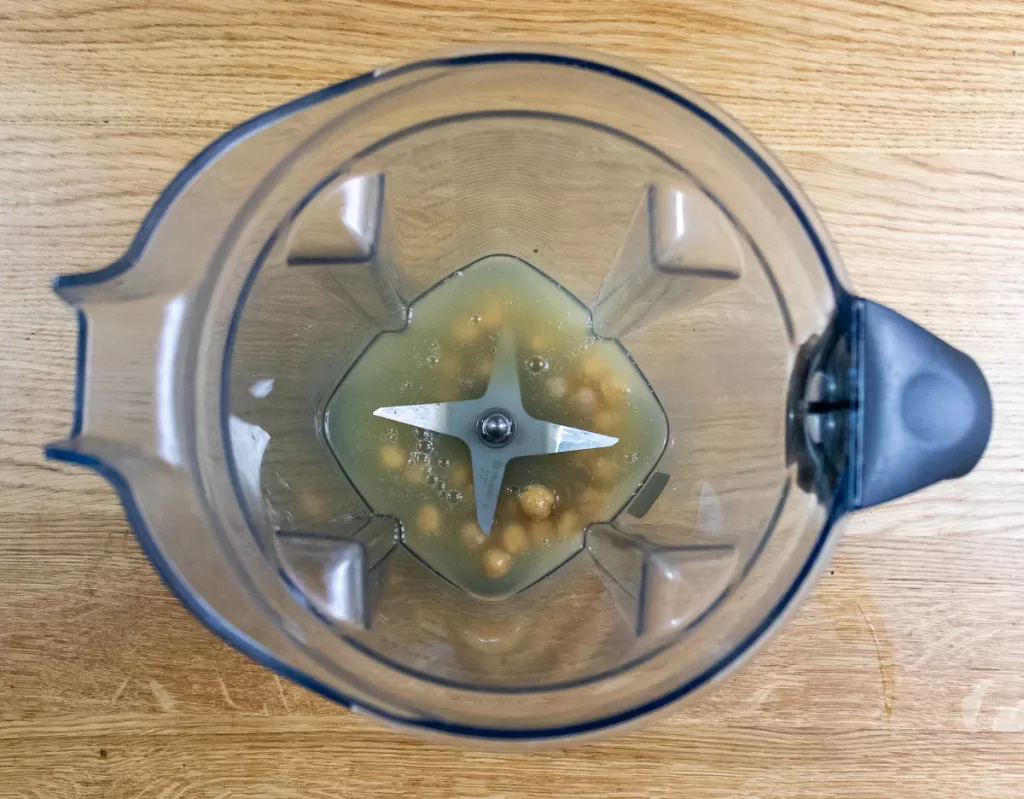
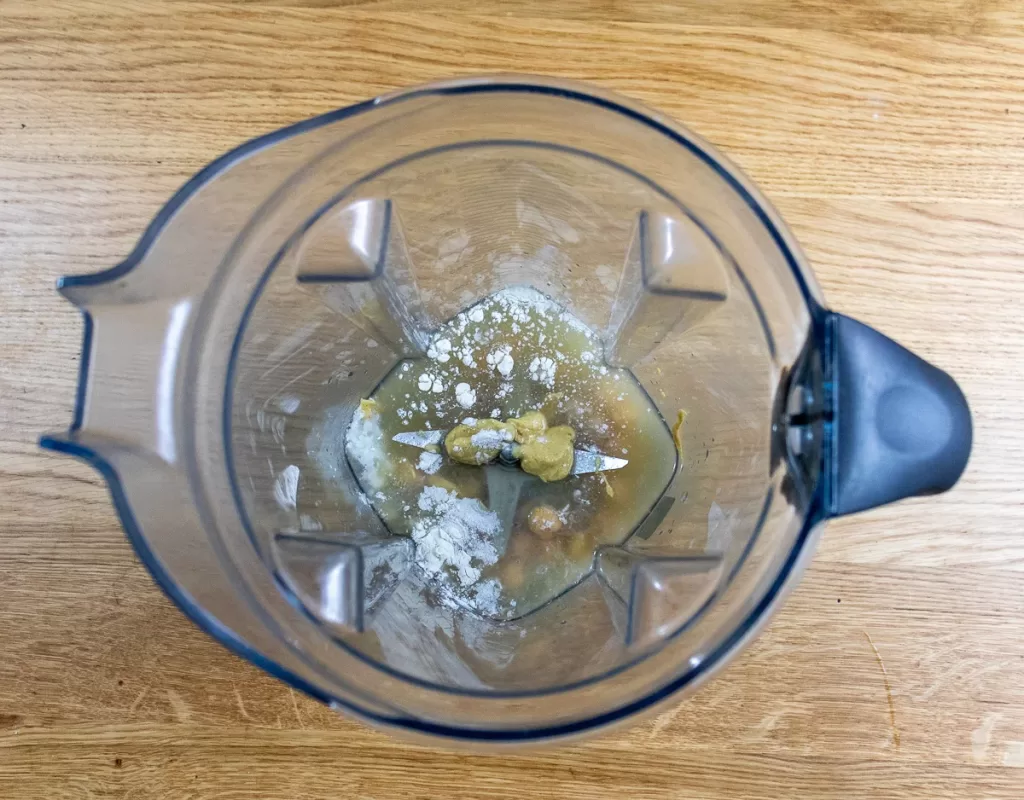
2) Blend your ingredients on high until you have a smooth paste.
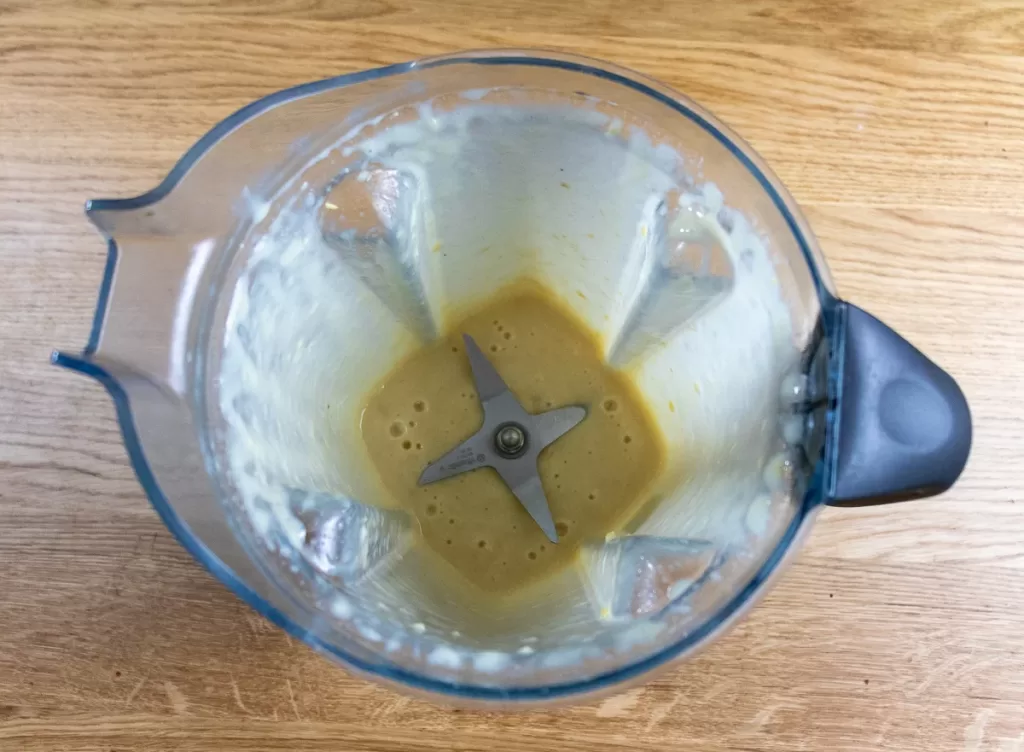
3) Then with the blender on a medium speed. I use 6 on my Vitamix. Begin gradually pouring in the oil. I put it in a squeezy bottle so I can control the flow better.
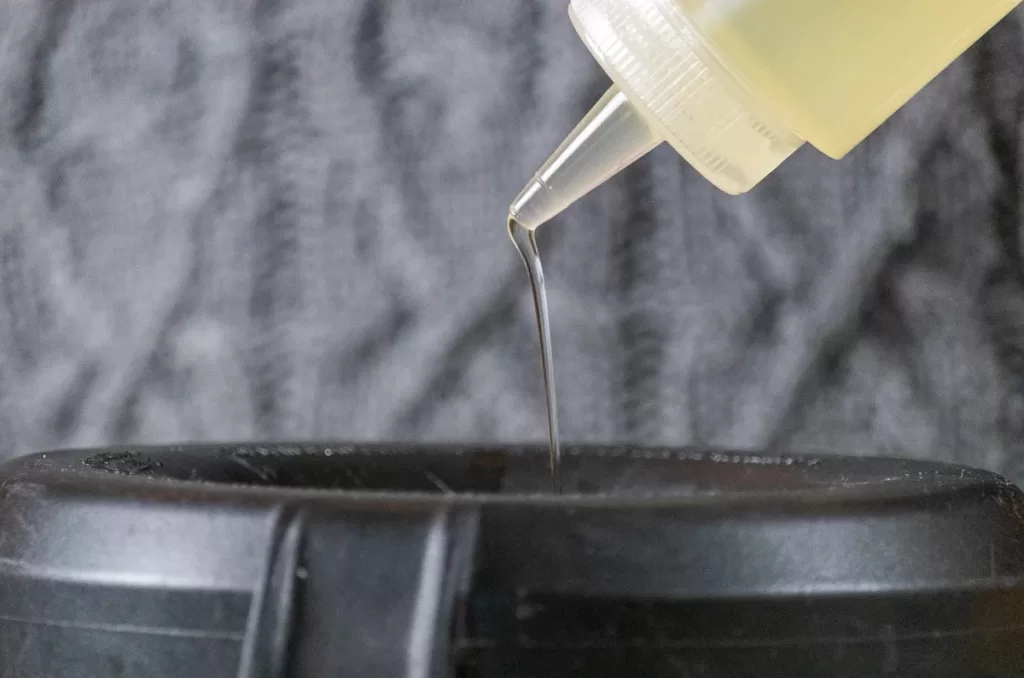
4) It will feel like nothing is happening, just keep adding the oil slowly! Eventually, the sound will change and it will come together.
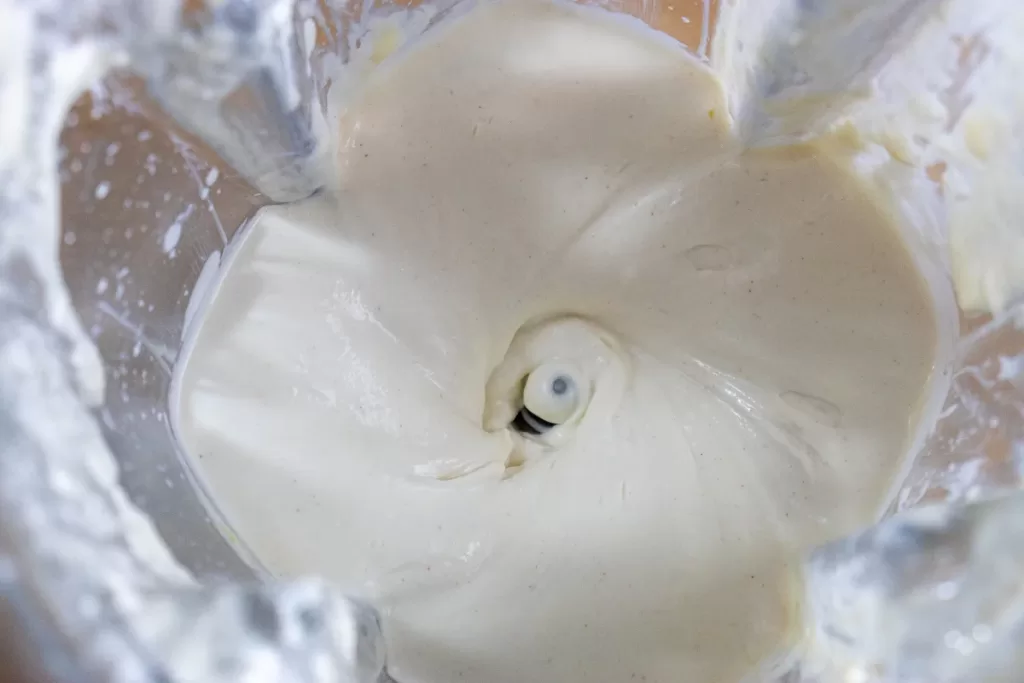
5) At this point you can adjust your seasoning. Add in the salt and sometimes I like to add a little more mustard or vinegar.
6) Now you have a shelf stable vegan mayo that tastes exactly like traditional mayonnaise! Enjoy it on some Fries, Chips, Burger or for some Big Mac Sauce
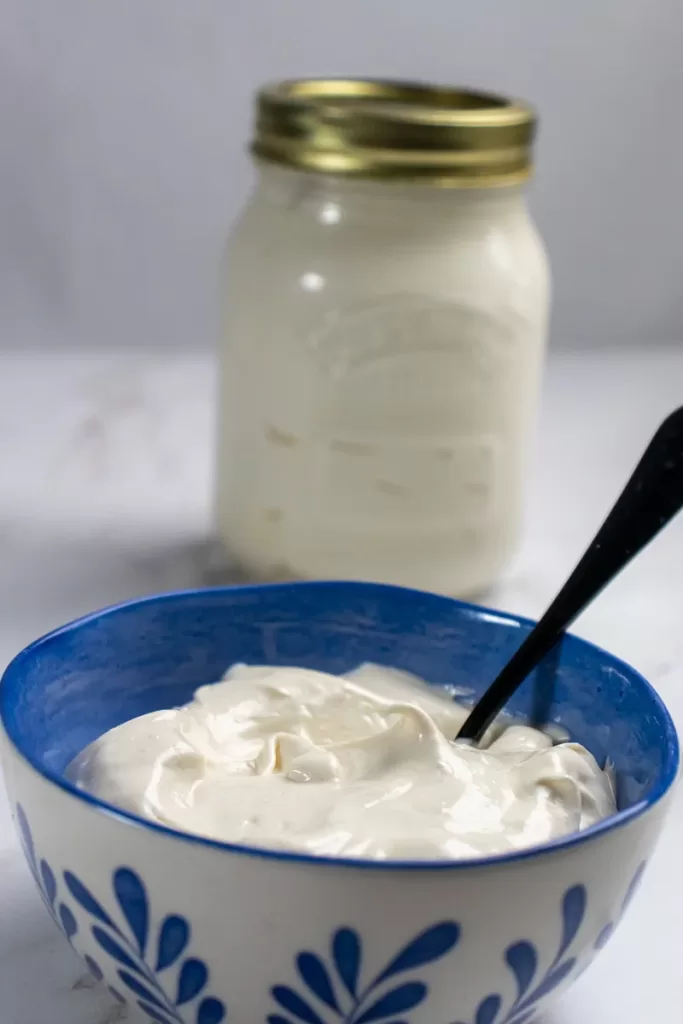
Tips for getting it right!
- Don’t blend it on too high a speed. Keep it to a medium blending speed.
- The biggest mistake you can make it to add the oil too fast. As long you stream the oil in gradually, and don’t blend it too much it should come out perfect!
- I have seen some recipes call for Kala Namak. This is also known as black salt and has a strong sulphurous smell. It bears a remarkable similarity to egg and is fantastic in recipes like tofu scramble. However, in my testing I found that it didn’t help at all. The taste was significantly better when it was left out.
Potential variations
- Chipotle mayo – Add some chipotle paste or powder if you have it for a smoky, spicy flavour.
- Lemon herb mayo – Add some fresh herbs like parsley, dill, or basil and a squeeze of lemon juice for a bright, tangy flavour.
- Za’atar mayo – Add a few tablespoons of Za’atar and you will have a wonderful middle eastern flavoured mayo. This is my favourite variation!
Frequently asked questions
Does vegan mayo go bad?
Like traditional mayonnaise, it will go bad eventually. The inclusion of lactic acid in this recipe ensures its freshness lasts longer. It should last a couple of weeks without issues when kept in the fridge.
Is vegan mayo healthy
It is generally healthier than traditional mayo. It contains no eggs, making it cholesterol-free. Nonetheless, there is a significant amount of oil, so it is not necessarily healthy.
Tried this recipe? I’d love to hear what you think! Leaving a comment and rating not only helps me but also helps others find and enjoy this recipe.
If you loved it, sharing it or tagging @theseveggiedelights is another great way to spread the love. Your support means a lot—thank you!
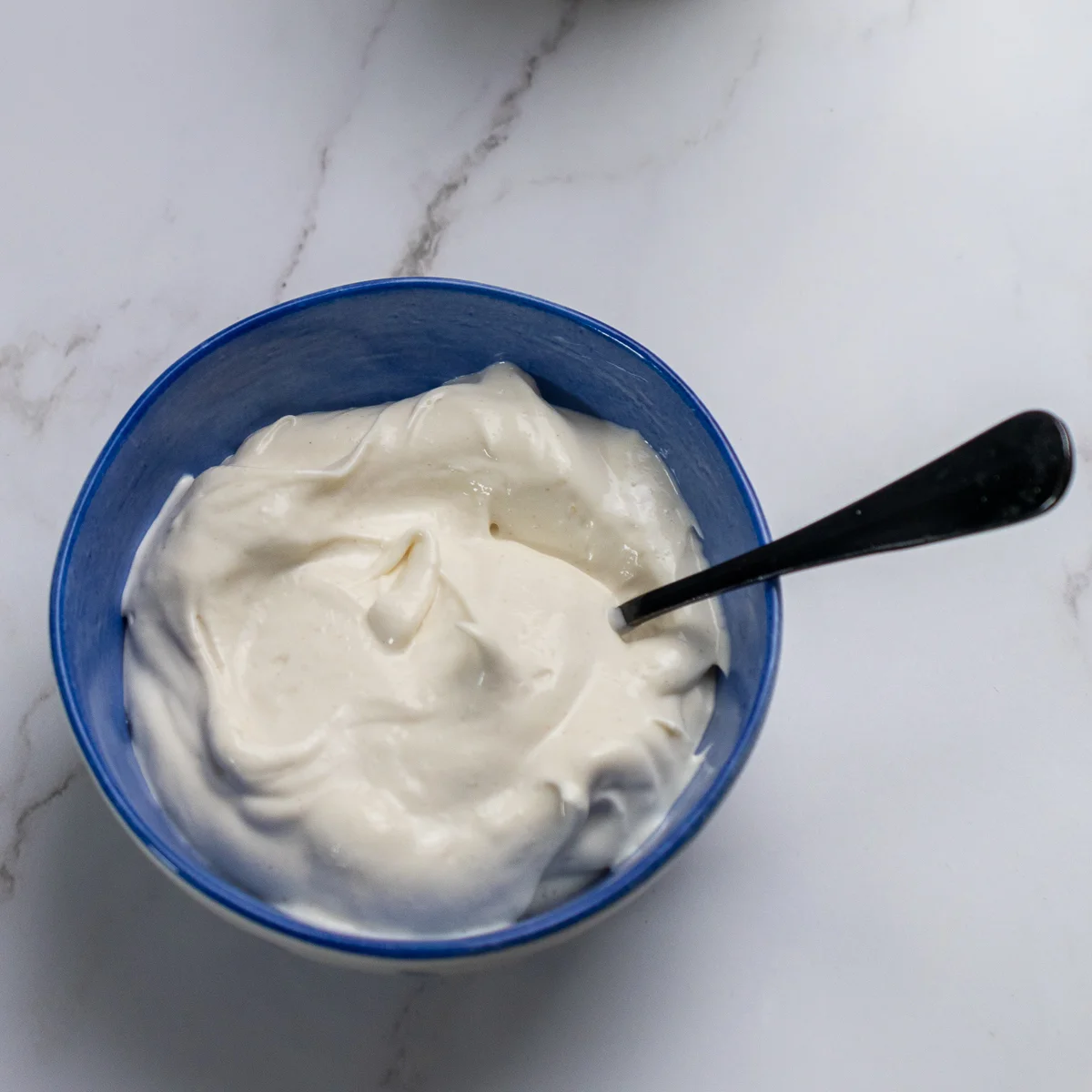
Vegan Mayo
Equipment
Ingredients
- 300 ml Sunflower oil You use whichever oil you like
- 2 tbsp Chickpeas
- 125 ml Aquafaba Liquid from one tin
- 1 tbsp Mustard I like Dijon, but you can use any
- 1 pinch Salt
- 2 tsp Apple cider vinegar
- 1 tsp Lactic Acid Not essential – Use more vinegar if not using
- 1/4 tsp Xanthan gum Not essential – May need more oil if not using
Instructions
- Add two tablespoons of chickpeas to a high-powered blender. Along with the aquafaba from the tin, the mustard, lactic acid, xanthan gum, vinegar.125 ml Aquafaba, 1 tbsp Mustard, 2 tsp Apple cider vinegar, 1 tsp Lactic Acid, 1/4 tsp Xanthan gum, 2 tbsp Chickpeas
- Blend on high until combined and you have a smooth paste
- With the lid on, and the small cap off. Start your blender on low and build up to a medium speed. On my Vitamix, it around 5/6 works best.
- Now stream in the oil very slowly! Continue until the oil has been used up. By now, it should have emulsified and you should have a vegan mayo300 ml Sunflower oil
- Add the salt in once emulsified1 pinch Salt
- Adjust the flavour with the mustard and vinegar

